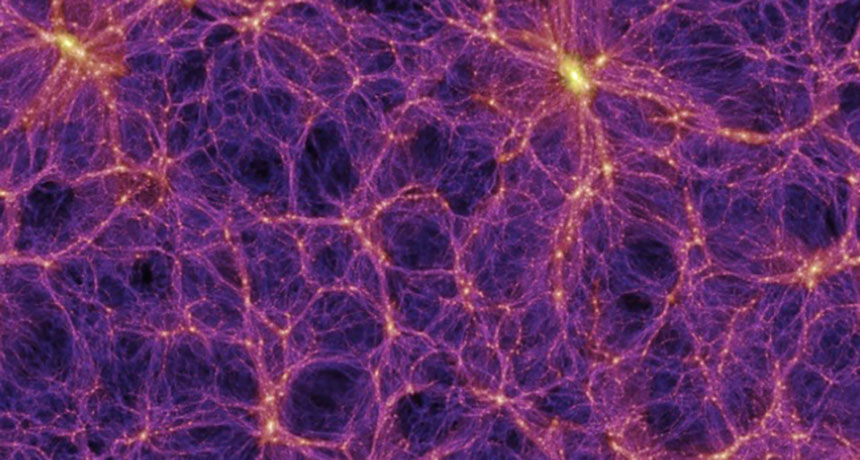Milky Way’s loner status is upheld

If the Milky Way exists in the biggest cosmic void ever observed, that could solve a puzzling mismatch between ways to measure how fast the universe is expanding.
Observations of 120,000 galaxies bolstering the Milky Way’s loner status were presented by Benjamin Hoscheit June 7 at a meeting of the American Astronomical Society in Austin, Texas. Building on earlier work by his adviser, University of Wisconsin‒Madison astronomer Amy Barger, Hoscheit and Barger measured how the density of galaxies changed with distance from the Milky Way.
In agreement with the earlier study, the pair found that the Milky Way has far fewer neighbors than it should. There was a rise in density about 1 billion light-years out, suggesting the Milky Way resides in an abyss about 2 billion light-years wide.
Simulations of how cosmic structures form suggest that most galaxies clump along dense filaments of dark matter, which are separated by vast cosmic voids.
If the Milky Way lives in such a void, it could help explain why the universe seems to be expanding at different rates depending on how it’s measured (SN: 8/6/16, p. 10). Measurements based on the cosmic microwave background, the earliest light in the universe, suggest one rate of expansion, while measurements of nearby supernovas suggest a faster one.
Those supernovas could be feeling an extra gravitational pull from all the matter at the edges of the void, Hoscheit says. The actual expansion rate is probably the slower one measured in the universe’s early light.
“If you don’t account for the void effects, you could mistake this relationship to indicate that there is too much expansion,” Hoscheit says.